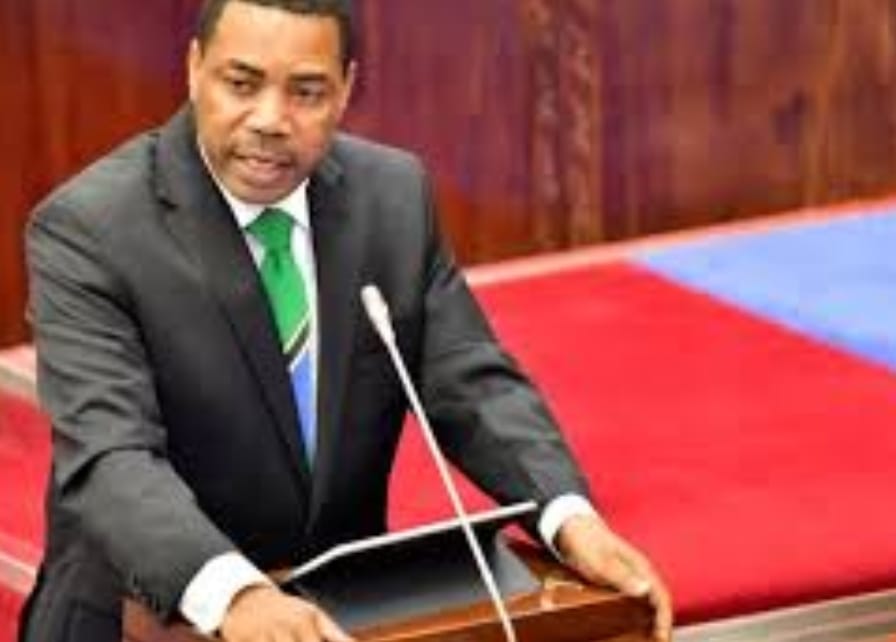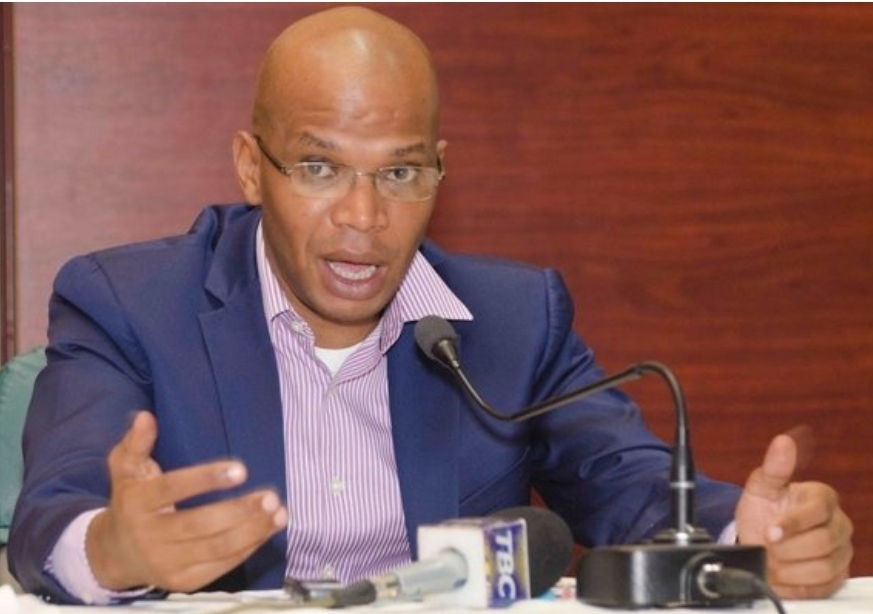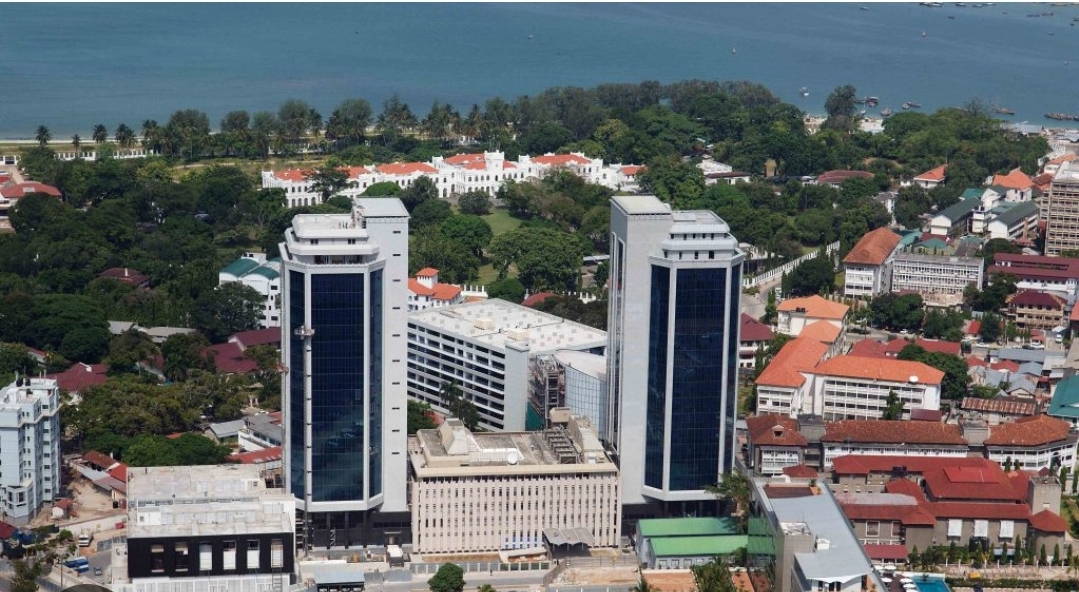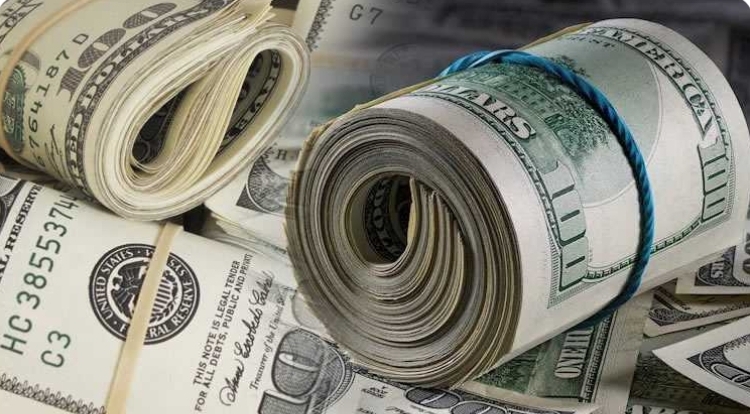WHEN Jesus Christ laid down the key rule of counting the cost of intervention to his disciplines( Luke 14: 27-30), probably he communicated more of today’s most patent economic failures as a result of the confrontation between intervention and interference.
Jesus spoke of spiritual matters, but as he so often did, he shed light in terms of familiar economic affairs. This rule has been one of the most important pillars of economic prosperity.
As countries struggle to make their economies prosper, their magic to get to the centre of economic civilization depends on how economic policy formulation and implementation are wired to count the cost of realistic interventions without interferences.
When analysing economic behavior of any economy, one could easily realize there is no better aspect of the body economic which subscribes more to this rule than exchange rate markets.
The Tanzania shilling has continued to take a beating against the dollar according to the Central Bank of Tanzania. As of 16th, August, 2023, the shilling hit a new record low of an average of 2428.7 against the dollar.
Despite the official exchange rate from the central bank, there is the challenge of adverse market conditions which is reflected in the widening gap between the market rate and the official rate.
I’m not a cynic pessimist but I predict further serious beating by the end of the year. The shilling could go as low as 2670 to the dollar by the end of the year 2023.
Because the exchange rate is the price that reflects our demand for – and supply of – dollars, my prediction is based on the trends of imports, exports, remittances and portfolio flows that help us to predict the rate of exchange between the shilling and the dollar.

In the last one year, for example, our monthly import bills on average have increased by six percent as exports increased by only 1.7 percent. This means our monthly deficit has increased by 4.3 percent.
However, this is not a very different tangent as per the last 16-year history. Going by the external shock in the economy, the shilling remains with no strength
Depreciation as a result of external factors has been exacerbated by lower risk appetite in the global markets and interest rates hikes in the United States (US) that have pushed investors away from many parts of Africa towards a safe high paying US treasury bonds.
Further more, the current economic situation such as the weak global economy and geopolitical wars might have significantly contributed to this obscene depreciation of the shilling.
Another worrying trend is the shift of geopolitical wars to Africa, especially in West Africa. If this potential political risk is not contained, the shilling will be in for a rough ride.
Socio-Political Risk
To paraphrase Karl Polanyi; the political and the economic cannot be understood separately. This means, to understand the economy, we do not just read market exchange or even production. We must study the state and society as well.
Political risk is notoriously difficult to quantify. However, by carefully reading the current social and political happenings in Tanzania, we can only conclude that the impact of politics on exchange rate markets will be significant.
Of recent, the state has chosen to carry itself with pyromaniac tendencies in dealing with the economy as it kicks away every reasonable policy alternative from the society. This tendency, coupled with public reactions, is likely to have serious short-term ramifications on the already hobbling economy.
The ongoing pingpong game between the state and public concerning the DP World conondrum and the Ngorongoro fiasco is already sending serious economic shockwaves.
Our reading of uncovered interest rate parity (UIP) indicates risk- neutral investors’ are now blowing hold and cold as they analyse post-DP World conondrum exchange rates on top of the current volatility.
When we analyse the ongoing socio-political events and allow exploitation of information that aggregate indexes of political uncertainty, we conclude that the shilling is likely to even cross the 2670 mark before the end of October, 2023.
Coupled with the black market movements, which I will soon delve into in this article, the shilling may go beyond 2800 by end of the year.

Although the jury is still out as to the general impact of the socio-political shivers on the economy, we believe the cul-de-sac deals on current investment initiatives needs no ex-cathedra pronouncements from government for us to tell the impact. The available economic models are more than enough.
Risky Economic Models
The market, the argument goes, is able to restore an equilibrium when times are rosy. To some extent, it may be true, though temporarily.
When the intervention comes guns blazing as turmoils had long set in, the purpose for intervention becomes less effective. Interventions, especially in fragile economies like ours work better when prescribed early in the day without interferences.
When they come in the eleventh hour, they only act as hijack-economic reactions. There is no shortage of proof that this is what we have always done best as a country.
Our economic managers tend to subscribe more to monetarists and Keynesian policies than Milton Friedman and John Keynes could do. When the capital account gospel entered town, they took it literally. To them, it meant to plucking out all the windows.
In turn, this practice has been allowing money to come and go at the slightest signal of risk. Consequently, it has become difficult for us to smoothen out undue spikes in the exchange rate market. I’m aware some experts from our central bank will not agree as they are likely to table the Foreign Exchange Act, Cap 217 R.E, 2002 as amended.
They could as well put forward the Foreign Exchange Regulations, G.N.No.294 of 2022 which are made under section 6(1) of the Foreign Exchange Act to build a case for the interventions they do. All these do not insulate the market.
First the Act is bereft of a proper theory of which the general economy is managed. Good economic theory results in good economic practice, as Mises and Hayek severally explained. We produce economic disasters, when we apply unsound economic theory. The theory in which markets are skewed in favour of capital fundamentalism is shaky and hollow.
Secondly and most importantly, the interventions as per the act are designed to play catch up. This means they come late in the game, hence the genesis of their ineffectiveness.
A good example is what has happened when the Central Bank issued a statement concerning prohibiting domestic payments of goods and services using foreign currencies between Tanzania residents according to the public notice of 2007 and December 2017. Yet, citizens have chosen to violate it for the reasons I will soon delve into.
Following the liberalization of forex markets, the necessary interventions by the central bank are always predictable by speculators. Speculators are always sharp to lunge on dollars sold by the bank.
In fact, since then, any economist regardless of school of thought could tell the tendency that sharp depreciation is always followed by relative stability and relative appreciation in the short run. This implies artificial movements in the market.
Nonetheless, we had not to expect different results. First, the central bank started with sterilized interventions and when inflation targeting was introduced, it switched to unsterilized interventions. For the unitiated; sterilized interventions cause no effect on the monetary base while unsterilized ones are designed to cause impact on the monetary base. In the absence of a well put economic theory backing these interventions, markets become more susceptible to external shocks.
Absorptive Capacity
For the economy to stand the heat when there are exchange rate volatiles as a result of external shocks, internal productive capacity of the economy needs to be stable. This is because we export to increase capacity to import.
With the trade deficit Tanzania has, the investment-saving gap can only make the shilling tank more. One would ask; if this is a well known phenomenon, why has the central bank not changed its single monetary mandate policy which focuses mainly on price stability or inflation targeting to a dual monetary mandate that would spark production?
In answering this question, our economic policy mandarins resort to the bad side of interventions by arguing that interventions are cyclic. That, one intervention by the state into the economy lead to another intervention. The disruptions caused by the first intervention lead to the crisis for further political interventions to solve them.
This reasoning suffers from two fundamental deficits. First, it ignores the fact that interventions are not interferences. Two, they always intervene in the economy by necessary implications because economies are not meant to be on autopilot. Only that they do it the wrong way. Let’s briefly interrogate the infrastructure investment policy as an example.
The tendency is that, infrastructure is the only multiplier when thinking of expansionary fiscal policy. But to cater for absorptive capacity, we need balanced policies so that we can have money for other foreign exchange earning sectors.
What they normally forget is that infrastructure investment is not a panacea and it can easily turn into an economic dud. Of course, infrastructure is important but investing in sectors that produce tradables is the best way to earn us dollars.
Partial Currency Substitution
Because of a bad track record of the shilling, it has been common to find people transacting using dollars. It is called partial and unofficial dollarisation. People switch to a dollar with the intention of eliminating exchange rate volatilities.
As I pen this article, businesses are not taking chances. A number of companies have started pegging their charges on a dollar to insulate themselves against the risk of a depreciating shilling.
For traders is a tale of rising cost of business given the fact that many of them earn in shillings but transact in dollars. It has become a common practice for some businesses in this country, especially in sectors related to entertainment, rent and hospitality to peg their charges to the dollar to avert the risks of the ever-losing shilling.
Our investment drive is also feeling the heat. As the unit keeps shedding massively against the dollar, the ripple effect to other currencies such as the euro and pound becomes eminent as this effect exerts more downward pressure on the unit. In these circumstances, investors might lose confidence in the currency hence adjusting their operations in dollars. The net effect is dollarisation of the economy of which black market finds its way.
Partial currency substitution speeds up black market. Though it is difficult to decipher the exact amount of dollars in circulation as result of black market trade, there exists “on-site-evidence” that a sizeable level of transactions is now carried out in dubious transactions.
Inflation
The tanking shilling comes with domestic monetary inflation. To our case, the variables of export-import equation have started biting. Although Tanzania has had a relatively lower inflation rate in the region, the recent free fall of the shilling may reverse this trajectory. Fastening your seat- belt before the bell rings could be a wise thing to do. But why fasten the belt?
Ludwing von Mises has a perfect reason;
“If more than one kind of money is used as a medium of exchange, the mutual exchange ratio between them is determined by their purchasing power. As soon as domestic inflation begins to affect the prices of some commodities, long before it has exhausted all its effects upon the greater part of the prices of commodities and services, the price of foreign exchange tends to rise. The rise in foreign exchange rates merely anticipates the movements of domestic commodity prices.”
Dealing With The Problem
Without stability of exchange rates, any international monetary system would be flawed at an important point because it would lack a major condition of international economic integration
It is not the counsel of despair as William Roepke calls the idea, to have flexible exchange rate markets that are cognizant of how international markets can affect the domestic economy. As a matter of both urgency and importance, we need to fix the inherent anomalies in our market systems through the law and policy.
Secondly, a very risky model called liberal economics needs some serious policy thinking as opposed to “one size fits all” policy platforms. There is no denying that this is a dominant economic doctrine with its emphasis on free market and private sector at the apex. But it is how it is applied that makes it a success.
A few days ago, Her Excellency Madam President Samia Suluhu posed a question to the public as; How did poor-resource countries get rich?
The answer to this question lies in the question; “Why are resource-rich countries poor?”
Her Excellency may want to know the fact that; it is how they have applied the liberal economic model. Countries in South East Asia, Europe and America adopted liberal markets pragmatically.
They used gradual processes as opposed to flagship projects devoid of rigorous policy appraisals, measured chances of success and strategic blending of merchantalism with a health relationship between the state and the economy. This is what countries like Tanzania have not been able to do.
Thirdly, through a healthy manufacturing sector, we will be able to cushion the shilling especially in times of supply chain disruptions.
It is sometimes laughable when I hear people claim that government should reduce importation of goods and services to make the shilling stable. That, this measure could make us have a trade surplus, the argument goes.
But that is not the correct position. We can only do so if our domestic productivity levels are solid and sustainable. As of now, eighty percent of our imports is petroleum, machinery and industrial raw materials. We have no luxury to cut any of those. That’s why I got shivers when Hon. January Makamba said they could not import petroleum due to shortage of dollars.
Primarily, petroleum is a national security imperative. Using whatever dollars we have to buy it, is a very critical decision in the short-run.
Because of the reasons related to the primary argument, reducing imports to keep dollars defeats the purpose of having them. Dollars are for imports. Keeping them in vaults is bonkers.
When all is said and done, you have to always want your country to succeed.
I wish my country well!










